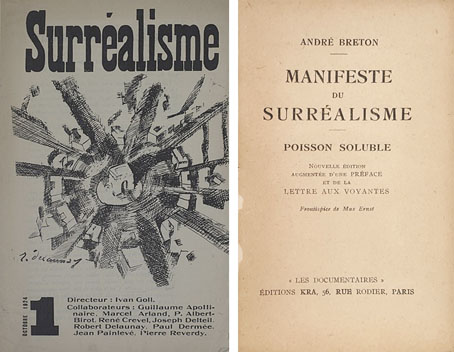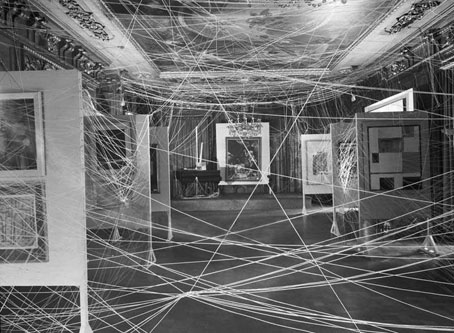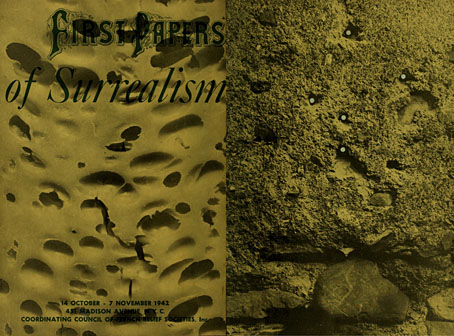
As I was saying a couple of weeks ago, Surrealism will be 100 years old this year, if you mark the movement’s birth from the first manifestoes (there were two different ones) published in October 1924. Surrealism doesn’t really have a definite beginning, however, either in 1924 or earlier on; the movement evolved over several years, with different factions competing for followers while squabbling over intentions. After a great deal of ferment the manifestoes from the opposed groups led by Yvan Goll and André Breton were a declaration that something substantial had been happening that required definition. I’m not sure why all of this interests me as much as it does just now, but I’m looking forward to seeing where the interest leads. Don’t be surprised to see more posts on the subject in the coming months.

So, then… Fast-forward to 1942 and First Papers of Surrealism, an exhibition of paintings staged in New York City by the Coordination Council of French Relief Societies in October of that year. The exhibition was curated by André Breton with the assistance of Marcel Duchamp, Breton having recently arrived in the United States after escaping from Nazi-occupied France together with a small group of Surrealist artists, some of whom were represented in the show. Duchamp’s main contribution was His Twine, an installation of a large quantity of string threaded around the exhibition space through which the visitors had to peer in order to see the paintings. Duchamp also invited a group of children to play ball games inside the gallery on the opening night. This wasn’t the first Surrealist exhibition to be held in New York—Julien Levy had introduced the city to the latest art movement at his own gallery in 1933, and had been showing Surrealist paintings and Joseph Cornell’s artworks in the years that followed—but First Papers on Surrealism was an important event, with many major artists represented.

What you see here are pages from the exhibition catalogue, a publication which is more like one of the smaller Surrealist magazines than a mere list of the pictures on display. Marcel Duchamp designed the die-cut cover (those holes make me wonder whether these were also originally threaded with string), while the catalogue interior contains an intriguing collection of quotes, captions, photographs and illustrations. Breton’s “Great Transparent Ones” raise their invisible heads again, while the artists and curators are all depicted in a series of “compensation portraits” which stand in for an absence of suitable photos.
